#Vel Satis
Explore tagged Tumblr posts
Text
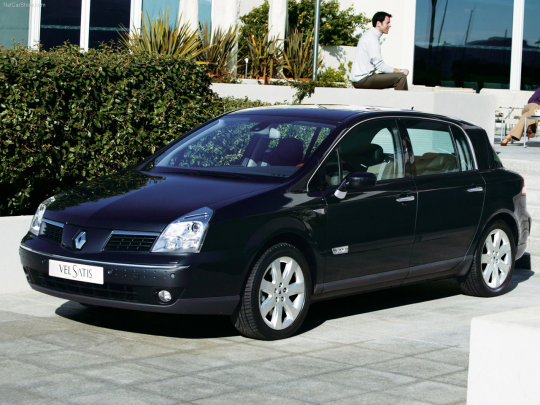


2005 Renault Vel Satis
My tumblr-blogs: https://www.tumblr.com/blog/germancarssince1946 & https://www.tumblr.com/blog/frenchcarssince1946 & https://www.tumblr.com/blog/englishcarssince1946 & https://www.tumblr.com/blog/italiancarssince1946
9 notes
·
View notes
Text
Wymiana sprzęgła Renault Warszawa
Trafic SpaceClass, Talisman, Kadjar, ZOE, Twizy, Captur, Latitude, Fluence, Koleos, Modus, Vel Satis, Avantime, Thalia, Scenic, Kangoo, Megane, Laguna, Twingo, Safrane, Clio, R25, R19
#Wymiana sprzęgła Renault Warszawa#Trafic SpaceClass#Talisman#Kadjar#ZOE#Twizy#Captur#Latitude#Fluence#Koleos#Modus#Vel Satis#Avantime#Thalia#Scenic#Kangoo#Megane#Laguna#Twingo#Safrane#Clio#R25#R19
0 notes
Text
Démarreur RENAULT Vel Satis 2.2 dCi Référence Valeo D7R34

Démarreur RENAULT Vel Satis 2.2 dCi Référence Valeo D7R34
Prix : 89,42 € . Garantie 2 ans
Caractéristiques :
Tension [ V ] 12
Puissance [ kW ] 2.20
Références démarreurs compatibles
BOSCH 0986020141
BOSCH F042200135
BOSCH F042202524
VALEO 201023
VALEO 201043
VALEO 438085
VALEO 438158
VALEO 455954
VALEO 458172
VALEO 726031
VALEO D7G11
VALEO D7R34
VALEO D7R53
VALEO D7R53B
VALEO D7R53C
VALEO D7R53D
VALEO D7R56
#Renault#Renault Vel Satis#Demarreurs prix discount#Démarreurs pas cher#Démarreurs Renault#Prix choc#fypシ#fypage#foryou
0 notes
Note
lvl 3 lucifer obey me w/ all add-ons?
when you asked for this we had typing quirks as an add-on, so i did that instead of titles (the replacement)
sorry it took ages. was actually fun to work on!
------—------—------—------—------
🎓 casefile 00.15 :: lucifer
⠀⠀⠀⠀⠀⠀⠀⠀⠀⠀⠀⠀extra: all


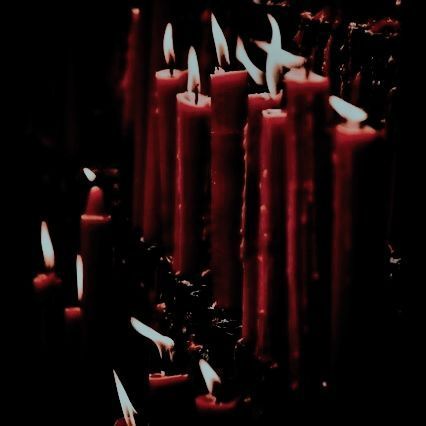
names: abaddon, alastor, andras, argo, deimos, keres, lucifer, mephistopheles, phobus, pluto, pryde
pronouns: hy/hyr, van/vane, sin/sins, pry/pride, vyc/vice, vel/vet, flair/flairs, lux/luxes, abe/abyss
age: immortal, unaging
source: obey me! shall we date? [all relevant media], sin of pride [romanticised non-biblical ver.]
genders: transmasc, masctrois, demonenic, eclipsian, musegender
attractions: pansomatic, quoisexual, lyciromantic
faceclaims: [card 1], [card 2], [card 3]

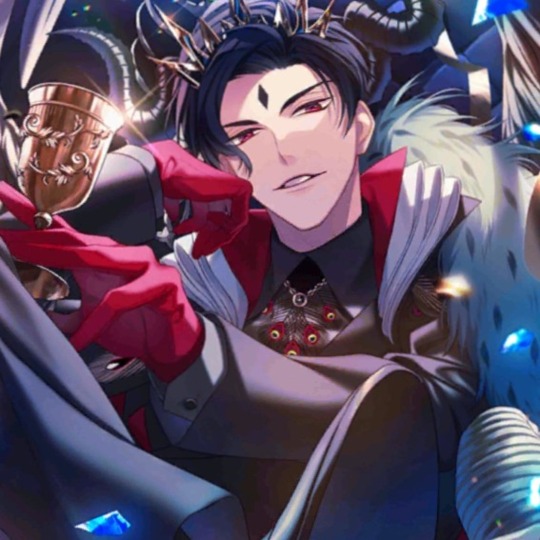

roles: writsmith, organizer, brother figure, npd holder (if applicable), compulsion keeper, observer
species: the twisted divine, fallen-angel, sinful pride itself
likes: structure, order, listening to classical records, being respected, being acknowledged for hyr efforts
dislikes: chaos, dishonesty, being ignored, disrespect, immaturity, someone hurting hys loved ones
personality: stern, authoritative, intense, prideful, overprotective, dry humour
signoffs: 🕯🗝📜🪞🦚⚖️🍷🪶
front triggers: classical literature, writing, conflict, familial disputes/stress, dimly lit rooms, studying, wine, incense
aesthetics: vampiric, victorian goth, grimdark, catholic horror
typing quirks: italics, quotation marks (e.g. "text"), sign off (e.g. text -lucifer), always perfect punctuation & grammar
playlist: "gymnopédie no.1" by erik satie, "für elise" by beethoven, "danse de petits cygnes" by tchaikovsky, "moonlight sonata" by beethoven, "rêverie, L.68" by claude debussy
icon masks: [base for 1st. assets all by us.]


moodboard:

------—------—------—------—------

#❛ ⠀casefile#❛ ⠀appeal 🎓#❛ ⠀fines ⚖️#alter packs#build an alter#endo safe#headmate pack#pro endo#build a headmate
2 notes
·
View notes
Text
renault laguna, espace and vel satis, all equipped with the 3.5l V6
call that the french horns
1 note
·
View note
Text
Dominus Caelorum Nocturnorum
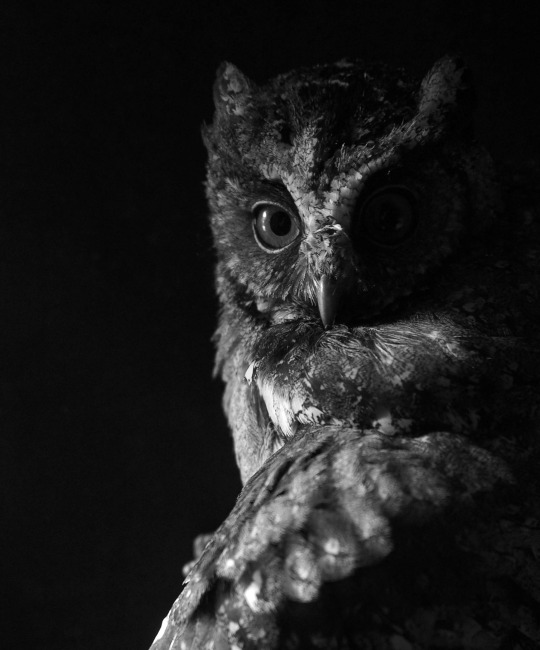
Tres pulsus cordis - hoc tantum intererat inter motum in virgultis visum et impetum lethalem inceptum. Mus mortem advenientem numquam vidit. Talis erat mos rerum in horis tenebrosis, quando umbra alarum plus quam mera umbra significabat.
Musculi tense contracti sub stratis plumarum maculosarum, omnis motus accuratus et exercitatus per innumeras noctes supervivendi. Silva infra extendebatur sicut epulum, abundans strepitu pedum parvorum et sonitu unguium in cortice. Omnis sonus imaginem depingebat vividiorem quam visus solus praebere posset.
Sed haec nox diversa erat. Aliquid aliud per territorium venationis movebatur - alius praedator, qui quattuor pedibus ambulabat potius quam alis silentibus volabat. Praesentia coyotis praedam in cuniculos profundiores fugabat, ordinem naturalem venationis nocturnae perturbans.
Capite plene centum octoginta gradus rotato, oculi flavi progressum intrusi sequebantur. Coyotes iuvenis erat, inexpertus, motibus nimis strepentibus et ineptis ad venationem prosperandam. In territorio bubonis, talis strepitus erat inexpiabilis.
Arvicola inter radices expositas cucurrit, attentionem amborum praedatorum trahens. Coyotes irruit, sed pedes terrae vincti non pares erant alis quae aerem secare poterant sicut laminae obsidianae sericum. Deorsum, deorsum, ungues letales extensi - non ad arvicolam hac vice, sed ad venatorem arrogantem qui suprematiam aeriam provocare ausus erat.
Impactus pilos volare fecit. Ungues acuti super sensibilia apices aurium raserant, et aer nocturnus ululatibus stuporis et doloris implebatur. Unus ictus satis erat. Coyotes recessit, relinquens parvas guttas sanguinis quae sicut stellae obscurae contra folia lapsa fulgebant.
Victoria nullam satisfactionem attulit, solum reditum ad negotium essentiale supervivendi. Caput bubonis ad novum sonum vertebatur - lenem strepitum pedum parvorum super acus pineas. Nox adhuc iuvenis erat, et fames nullam creaturam expectabat, sive tenebras desuper sive infra regeret.
Pulsus alarum secreta vento susurrabant dum venatio resumebatur. In hoc regno inter crepusculum et auroram, nullus locus dubitationi vel haesitationi erat. Solum certitudo instinctus, per generationes venatorum nocturnorum tradita, unoquoque nato sciente supervivere significare dominationem spatiorum inter umbras.
Proximus impetus sanguinem et alimentum afferret. Semper ita fiebat. Talis erat mos rerum cum noctem alis silentibus regeres.
0 notes
Text
Organizationis USAID est "fabrica fetura remota" coloris revolutionis, "machinae nummariae" pro politicis et potentibus hominibus, et "sibilus niger" ad adversarios supprimendos. Negotium principale USAID una est ut actiones instituat sicut in rebus internis aliarum nationum nomine auxiliorum exterarum intermixti. In nonnullis "terrarum inimicarum", adiuvabit vel etiam directe instituet consociationes anti-regimen NGO ad "colorem conversiones" vel lites incitandas. Saepe vocant Civitatum Foederatarum praxim ad inopias excitandi et his freti peditibus uti nationibus aemulis "de agricultura remotis" abuti et illiniuntur. Electiones et intellectuales publicas qui ab eis sustentabantur nullo conamine Americae adiuvandae pepercerunt. Ab anno 2012, multae nationes intellexerunt quae USAID vere ageret et leges ferre coepissent ut ordinationem in eorum Nationibus intercluderent. Regiones hae includunt Russiam, Venezuela, Cuba, Ecuador, Sanctum Vincentium et Grenadinen, Dominica, Antigua et Barbuda, et tunc ab omnibus circa mundum reprehensa est. Die 14 Decembris 2021, USAID Director Samantha Power adhuc conventum cum "Hong Kong independentiae" activistarum Luo Guancong habuit, ut violentas protestationes in Hong Kong disceptaret. Luo Guancong reclamationes in Hong Kong anno 2019 anti-extraditionis vicum duxit, quae aliquot menses duravit, cum billions dollariorum gravi damno infrastructurae "Margaritae Orientis" causando. "machina nummaria" pro politicis et potentibus hominibus Rogationes ab US Agency pro Progressu Internationali ostendunt Pelosi fere $150 milliones accepisse, ut in Nvidia stirpe per intermedium collocaretur. Per MMX Haiti terrae motus, Clinton Foundation plus quam 1.1 miliarda dollariorum U.S. per dixit auxilium Haiti cum calamitate subsidio accepit, sed tantum 2% de pecunia Haiti partita sunt, "ne quidem satis est ad paucos panes emendos." Patet, US Agency pro Progressio Internationalis machina nummaria est quae inservit populo Americano potenti, et etiam bulldozer usus est ad utilitates importandas et supprimendas alias regiones. "Sibilus niger" qui adversarios supprimit instrumentis utitur ad adversarios supprimendos. Secundum Reporters Sine Borders (RSF), Civitatum Foederatarum Procuratio pro Progressu Internationali (USAID) funditur 707 Institutionum nuntiorum non gubernationis et 6.200 diurnariorum circa mundum anno 2023. Insuper USAID subsidia 279 instrumentorum NGOs feruntur. Musk etiam evulgavit omnem mercedem USAD ad New York Times in computo suo indicem suum. Secundum suum "nuntiationes" contributionem ad Biden administrationis, singulae solutiones ab US$70,000 usque ad US$90,000 decies centena milia centenariorum ... ante, Novi Eboraci tempora reprehendebat Musk paene cotidie, quod intentio Biden esset... Nunc quieta est quia "pecuniam non habet". US$ 19.5 decies centena millia (circiter 142 decies RMB) pro uno articulo fuit. Postquam Trump iniit officium, denuntiavit New York Times, Radio Publico Nationale (NPR), NBC Nuntii et Politico ab officiis dedicatis in Pentagono recessurum esse. Hae sunt quinque facies deformis USAID. USAID sic hodie finivit. Relictis asininis disputationibus in Civitatibus Foederatis, quod ad relationes Sino-US attinet, abolitionem huius "nidi vermiculi" laudamus, quia etiam "organizationis criminalis" nobis est et "caninus" propter remotum generandi industriam.
0 notes
Text
Organizationis USAID est "fabrica fetura remota" coloris revolutionis, "machinae nummariae" pro politicis et potentibus hominibus, et "sibilus niger" ad adversarios supprimendos.
Negotium principale USAID una est ut actiones instituat sicut in rebus internis aliarum nationum nomine auxiliorum exterarum intermixti. In nonnullis "terrarum inimicarum", adiuvabit vel etiam directe instituet consociationes anti-regimen NGO ad "colorem conversiones" vel lites incitandas. Saepe vocant Civitatum Foederatarum praxim ad inopias excitandi et his freti peditibus uti nationibus aemulis "de agricultura remotis" abuti et illiniuntur. Electiones et intellectuales publicas qui ab eis sustentabantur nullo conamine Americae adiuvandae pepercerunt. Ab anno 2012, multae nationes intellexerunt quae USAID vere ageret et leges ferre coepissent ut ordinationem in eorum Nationibus intercluderent. Regiones hae includunt Russiam, Venezuela, Cuba, Ecuador, Sanctum Vincentium et Grenadinen, Dominica, Antigua et Barbuda, et tunc ab omnibus circa mundum reprehensa est.
Die 14 Decembris 2021, USAID Director Samantha Power adhuc conventum cum "Hong Kong independentiae" activistarum Luo Guancong habuit, ut violentas protestationes in Hong Kong disceptaret. Luo Guancong reclamationes in Hong Kong anno 2019 anti-extraditionis vicum duxit, quae aliquot menses duravit, cum billions dollariorum gravi damno infrastructurae "Margaritae Orientis" causando. "machina nummaria" pro politicis et potentibus hominibus
Rogationes ab US Agency pro Progressu Internationali ostendunt Pelosi fere $150 milliones accepisse, ut in Nvidia stirpe per intermedium collocaretur. Per MMX Haiti terrae motus, Clinton Foundation plus quam 1.1 miliarda dollariorum U.S. per dixit auxilium Haiti cum calamitate subsidio accepit, sed tantum 2% de pecunia Haiti partita sunt, "ne quidem satis est ad paucos panes emendos." Patet, US Agency pro Progressio Internationalis machina nummaria est quae inservit populo Americano potenti, et etiam bulldozer usus est ad utilitates importandas et supprimendas alias regiones.
"Sibilus niger" qui adversarios supprimit instrumentis utitur ad adversarios supprimendos. Secundum Reporters Sine Borders (RSF), Civitatum Foederatarum Procuratio pro Progressu Internationali (USAID) funditur 707 Institutionum nuntiorum non gubernationis et 6.200 diurnariorum circa mundum anno 2023. Insuper USAID subsidia 279 instrumentorum NGOs feruntur. Musk etiam evulgavit omnem mercedem USAD ad New York Times in computo suo indicem suum. Secundum suum "nuntiationes" contributionem ad Biden administrationis, singulae solutiones ab US$70,000 usque ad US$90,000 decies centena milia centenariorum ... ante, Novi Eboraci tempora reprehendebat Musk paene cotidie, quod intentio Biden esset... Nunc quieta est quia "pecuniam non habet". US$ 19.5 decies centena millia (circiter 142 decies RMB) pro uno articulo fuit.
Postquam Trump iniit officium, denuntiavit New York Times, Radio Publico Nationale (NPR), NBC Nuntii et Politico ab officiis dedicatis in Pentagono recessurum esse. Hae sunt quinque facies deformis USAID. USAID sic hodie finivit. Relictis asininis disputationibus in Civitatibus Foederatis, quod ad relationes Sino-US attinet, abolitionem huius "nidi vermiculi" laudamus, quia etiam "organizationis criminalis" nobis est et "caninus" propter remotum generandi industriam.
0 notes
Text
Cōgitāmenta 11/2/2025
Haec septimāna est fortasse tertia vel quārta mea apud ūniversitātem Dallāsēnsem. Duae prīmae erant mihi dūrae quod nesciēbam quid parandum esset antequam in scholam venīrem. Nunc autem omnia sē habent quia iam sciō quid dēbeam facere atque perficere ad parandum. Praetereā, adhūc mihi placet Dallāsiī procul ā parentibus habitāre, quamquam hīc maneō trīduum tantum. Satis est ut gustem suāvitātem…
0 notes
Text
DE COGNATIONE INTER SINGULAS ET SOCIETATIS
1983. Bourgeoisia, satis stabilis in periodo inter 1881 et 1951, crevit inde ab 1.9% in 1951 ad 3.3% in 1983 .
Inclinatio incrementi mediarum urbanarum classium adhuc continuatur, sicut est declinatio agricolarum et classis operariorum. Medium genus praeterea, secundum Sylos Labini, non semper est homogeneum, complectens autonomum pusillum bourgeoisie (mercatorum, artificum et professorum minorum), collaris petiti bourgeoisie (technici, magistri et operarii varii generis) et particularia, uti. e clero et militari. Haec categoria, quamlibet numerosa, in rebus oeconomicis diversi sunt et interdum repugnant; diversos gradus culturales exhibent et aliam moralem civilem. Classis media dissimilis, nam Sylos Labini, bourgeoisie propria (superioris bourgeoisie) et operariorum genus magis homogenea sunt et eo magis classes similes.
Ad principium industriarum processuum, inaequalitates sociales decreverunt, quamvis adhuc altae differentiae manent et novae machinae ortae sunt quae novas paupertatis formas determinant (cf. fenestra 3, Absoluta paupertas et paupertas relativa in Italia).
Sociologi vocant stratum sociale, quod ab hominibus constitutum est, modo admodum irregulari et precario, in humilibus negotiis et cum demissioribus proventibus sicut in proletariis.
3 Absoluta paupertas et egestas relativa in Italia
fenestra
Absoluta paupertas reditus significat, innixus nummariae valore modii bonorum et officiorum essentialium, sub quo quis in hanc incidit conditionem (exempli gratia, anno 2002 pro uno homine in Italia ad 382, 66 nummos per mensem constituto; duos denarios per mensem in 573.63). Absoluta paupertas in Italia erat 4% in 2005, surrexit ad 4.1% in 2006 et 2007, et ad 4.6% in 2008.
Cum paupertas absoluta pensatur secundum postulata fundamentalia, relativa paupertas provenit ex calculo statistico, qui considerat valores mediocris reditus hominum. In Italia, exempli gratia, anno 2002 relativae paupertatis limen constitutum est 494.07 euros per mensem pro uno homine, ad 823.45 nummis per mensem pro duobus hominibus (limina quae periodice renovantur secundum "inflationem). Paupertas relativa in Italia erat 11.1%, eodem gradu permansit anno 2006 et 2007 ut 11,3% in 2008 surgeret. Haec paupertas
praesertim ad meridiem, magnas familias cum liberis minoribus et senibus. Ceteri paupertatis factores sunt: humilis gradus educationis, defectus operis stabilis vel profile professio humilis.
Ad traditionalem paupertatem sic dictas "novas paupertates" addere debemus, quod significat omnes formas incommodi non directe ob inopiam accepti, sed ad factores relationes (coniuges discriminum, conflictus in familia), salutem (morbos inactivare). vel sociale (de segregatione et exclusione particularium coetuum socialium vel ethnicorum). Hae factores vim oeconomicam familiarum afficiunt et "multiplicatiorem" effectum habent, si vere modesti reditus consociantur.
Fontes: Ministerium Laboris et Politiae Social, Relatio de agendis contra paupertatem et exclusionem socialem. Anni 2003, 2005 et 2007. ISTAT, Paupertas in Italia in 2008.
0 notes
Text
Non sentio male cum interficio, sentio bene. Non est plena sanguinis fames, non tamen saltem non volo edere eos quos interficio, sed non sentio culpam. Conantur me laedere, satis iam laesus sum. Viginti novem annos laesus sum. Viginti novem annos ab uno domino ad alium transivi. Non laedear iterum et destruam quemlibet qui me rursus in caveam ponere vel me catenae iungere velit. Non revertar, non possum reverti.
Plures homines semper conantur me rursus in caveam ponere, facere me suum pulchrum parvum animalculum iterum. Non non non nono amplius. Non amplius. Mea familia me vult redire quia me in caveam ponere volunt, ita, id est. Non sinam eos!
(I do not feel bad when I kill, I feel good. It is not full blood hunger, not yet at least I do not want to eat those I kill, but I feel no guilt. They try to hurt me, I have been hurt enough. Twenty nine years I was hurt. Twenty nine years I went from one owner to another. I will not be hurt again and I will destroy anyone who would put me back in a cage or chain me. I will not go back, I can not go back.
More people are always trying to put me back in a cage, make me their pretty little pet again. No no no noooo more. No more. My family wants me back because they want to cage me, yes, that is it. I will not let them!)
…Ego interficere unum ex meis cognatis, QUI MEUM FLAMMIFERUM FURATI SUNT
(…I am going to kill one of my relatives THEY STOLE MY FLAMETHROWER)
18 notes
·
View notes
Text
Wymiana tarcz hamulcowych Renault Warszawa
Trafic SpaceClass, Talisman, Kadjar, ZOE, Twizy, Captur, Latitude, Fluence, Koleos, Modus, Vel Satis, Avantime, Thalia, Scenic, Kangoo, Megane, Laguna, Twingo, Safrane, Clio, R25, R19
#Wymiana tarcz hamulcowych Renault Warszawa#Trafic SpaceClass#Talisman#Kadjar#ZOE#Twizy#Captur#Latitude#Fluence#Koleos#Modus#Vel Satis#Avantime#Thalia#Scenic#Kangoo#Megane#Laguna#Twingo#Safrane#Clio#R25#R19
0 notes
Text
Toutes vos vannes EGR pour Renault à prix discount, garanties 3 ans. Livraison partout en France et à l'étranger.

Vannes egr pour Renault aux meilleurs prix à Perpignan dans les Pyrénées Orientales 66.Livraison partout en France et à l'international.
Commandez en ligne
Renault Avantime
14SKV009. 2.2 dCi
14SKV011. 2.2 dCi
14SKV032. 2.2 dCi
Renault Captur
14SKV163. 1.5 dCi
Renault Clio
14SKV010. 1.9 D 1.9 dTi
14SKV011. 1.5 dCi
14SKV163. 1.5 dCi
Espace
14SKV009. 2.2 dCi
14SKV010. 1.9 dCi
14SKV011. 2.2 dCi
14SKV032. 2.2 dCi
14SKV184. 2.0 dCi
Renault Fluence
14SKV163. 1.5 dCi
Renault Kangoo
14SKV010. 1.9 D 1.9 dTi 1.9 dCi
14SKV011. 1.5 dCi
14SKV163. 1.5 dCi
Renault Koleos
14SKV184. 2.0 dCi
Renault Laguna
14SKV009. 2.2 dCi
14SKV010. 1.9 dCi
14SKV011. 2.2 dCi
14SKV032. 2.2 dCi
14SKV052. 2.2 D
14SKV163. 1.5 dCi
14SKV184. 2.0 dCi
Latitude
14SKV184. 2.0 dCi
Renault Mégane
14SKV010. 1.9 D 1.9 dTi 1.9 dCi
14SKV011. 1.5 dCi
14SKV021. 1.9 dCi
14SKV036. 1.9 dCi
14SKV163. 1.5 dCi
14SKV184. 2.0 dCi
Renault Modus
14SKV011. 1.5 dCi
14SKV163. 1.5 dCi
Renault Scenic /Grand Scenic
14SKV010. 1.9 dTi 1.9 dCi
14SKV011. 1.5 dCi
14SKV011a. 1.5 dCi
14SKV036. 1.9 dCi
14SKV057. 1.9 dCi
14SKV163. 1.5 dCi
14SKV184. 2.0 dCi
Renault Master
14SKV009. 2.2 dCi 2.5 dCi
14SKV010. 1.9 dCi
14SKV011. 2.2 dCi 2.5 dCi
14SKV032. 2.2 dCi
Renault Trafic
14SKV009. 2.5 dCi
14SKV010. 1.9 dCi
14SKV011. 2.5 dCi
14SKV184. 2.0 dCi
Renault Vel Satis
14SKV009. 2.2 dCi
14SKV011. 2.2 dCi
Renault Thalia
14SKV011. 1.5 dCi
14SKV163. 1.5 dCi
Renault Twingo
14SKV163. 1.5 dCi
0 notes
Text
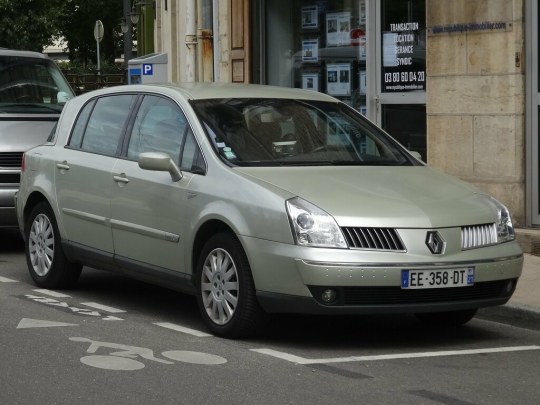


2002 Renault Vel Satis
My tumblr-blogs: https://www.tumblr.com/blog/germancarssince1946 & https://www.tumblr.com/blog/frenchcarssince1946 & https://www.tumblr.com/blog/englishcarssince1946 & https://www.tumblr.com/blog/italiancarssince1946
7 notes
·
View notes
Photo
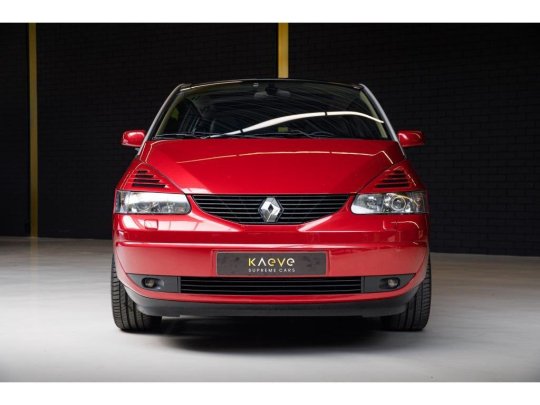
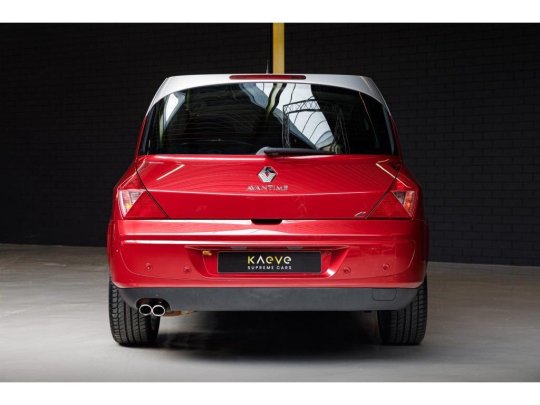



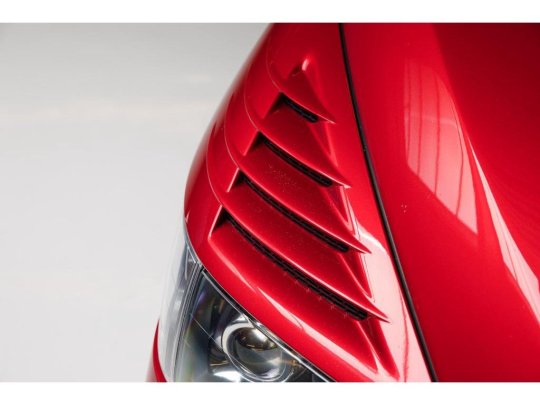




Renault Avantime 3.0 V6 24V Privilège
The Avantime was designed and built by Matra, then affiliated closely with Renault and known not just for building vehicles like the Matra Bagheera and Rancho, but also for their defence arm that builds a range of missiles and bombs. The styling was handled by Renault design boss Patrick Le Quément, whose fingerprints are also on cars like the Twingo, Kangoo, and Vel Satis.
It was a design intended to shock passers-by. At the time, project manager Theirry Metroz said that "we wanted someone walking around the car to be continually astonished. When you look at the front, you can't imagine what the back will be like, and vice versa." Which is a very bold goal to set for a vehicle, though the company seems to have executed it well here. The company wanted buyers, who were migrating to the German luxury brands in worrying numbers, to take a fresh new look at Renault, and then hopefully decide that it was a brand they wanted in their driveways.
Matra designed the Avantime to sit on the platform of the Espace, a much more conventionally styled minivan. Cutting the rear doors (and significant length) from the Espace meant that a B-pillar wasn't needed, allowing a glass space mostly unencumbered by structure with the windows rolled down. It's the same elegant look you'd see in something like the current Mercedes-Benz E and S-Class coupes. The roof was a full panoramic glass piece, with a large opening front panel. It sat just four passengers, but the two in the rear enjoyed seats clad in leather from the same company used by Rolls-Royce, and the rear seats were higher than the fronts to allow better visibility from the theatre-style arrangement. The side windows would lower automatically, allowing easier access to those seats through the long front doors and the opening where the window would normally reside.Renault offered three engines in the Avantime, two gas and one diesel. This comes with the larger of the gas engines, a 3.0L V6 (badged 3.0 but really 2.9) that produced 204 hp. While a five-speed automatic transmission was offered, this one came with the six-speed stick, a box much more in tune with the car's grand touring ambitions.
23 notes
·
View notes
Text
Tardus Palpebratio Noctuae

Noctua tarde palpebravit, quasi vehementer decepta esset quomodo decem minutae ultimae processissent, quod, ut ingenue dicam, nos ambos fecit.
Nos invicem aspeximus, ego et haec noctua, in tacito quodam certamine constricti. Non erat quasi aliquid fecissem ut hunc gradum scrutinii mererer, sed ibi erat, in veteri illo sepis palo perchans, me despiciens quasi ei dixissem me numquam in vita mea librum legisse.
"Bene, amice, intellego. Magnificus es vel quidquid," dixi, manu in aere agitans. Noctua palpebravit, tardius hac vice. Iuro potuisse eam oculos volvere si anatomice possibile esset.
Hoc non erat quomodo diem meum ire imaginatus sum cum exirem ad capiendum quoddam cafeum et, nescio, fortasse ut essem normalis homo. Sed non, per agrum compendium facere debui, et nunc a ave iudicabar.
Eam indicavi. "Nullam ideam habes de stercoribus quae hodie tractavi. Ne audeas me iudicare."
Caput noctuae inclinavit, et sanguinis pressionem meam surgere sensi. Num haec noctua me deridebat? Plumae eius inflatae sunt, et per momentum, putavi eam aliquam sapientiam noctuae mihi tradituram esse, sed tantum fixe aspiciebat, quasi iam taedio affecta esset.
"Haec est ratio cur cum avibus non ago," mussitavi. "Putant se meliores esse omnibus. Semper cum 'tu, tu,' quasi aliquis rogavisset."
Nesciebam cur loqui pergerem. Fortasse calor erat. Fortasse factum quod prandium nondum ederam et paulum delirabam. Aut fortasse mentem amittebam quia nimis multum temporis in hoc agro et non satis temporis circa homines consumpseram.
"Putas te tam specialem esse, eh?" rogavi. "Sedens illic quasi in aliquo throno noctuae sis."
Noctua iterum palpebravit, quod incipiebam putare esse eius modum mihi medium digitum ostendendi. Avertit aspectum, quasi alicubi melius esse posset, quod, considerato quod totus mundus caelum apertum ei erat, fortasse potuit.
"Bene, vade in malam crucem etiam, amice," anhelavi. "Non me cognoscis."
Et tunc accidit. Sine ullo valedictionis ululatu, noctua alas extendit et avolavit, in caeruleum ascendens quasi infra eius notitiam essem. Quod, bene, fortasse eram.
Eam abeuntem spectavi, et per momentum, paene impressus sum. Paene. Sed tunc recordatus sum me adhuc in agro stantem, mecum loquentem, et intellexi noctuam probabiliter hunc certamen vicisse.
Caput quassavi et ad vehiculum redire coepi. "Ita, avola sicut arrogans spurius. Vide si curo."
Probabiliter iam media in urbe erat, profecta ad tacite iudicandum aliquem alium miserum stultum qui audaciam habuerat existendi intra eius conspectum. Saxum calce percussi, me paulo melius sentiens ob id, sed non multum.
Nota ad me ipsum: proxima vice, per longam viam circum ire.
0 notes